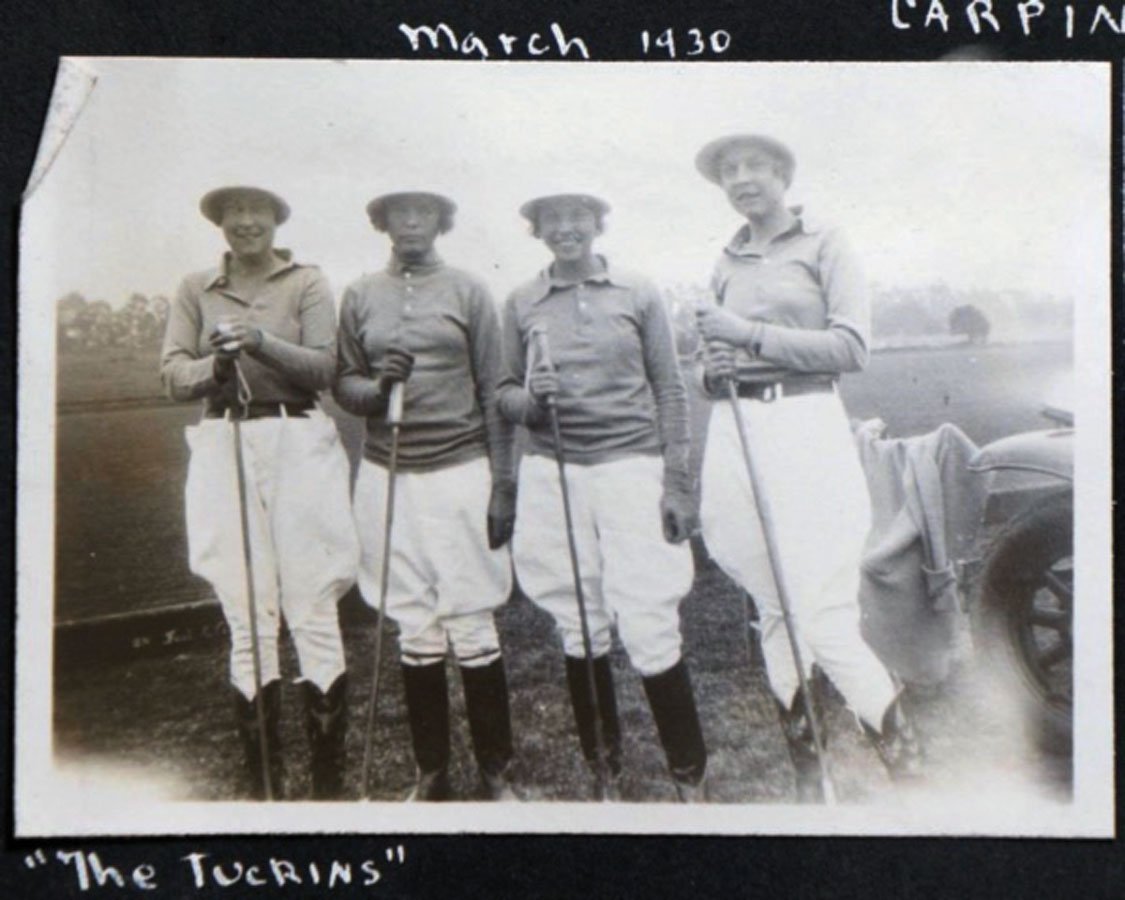Polo Pioneers
The Evolution of Women Players in Santa Barbara
Compiled and Written by Nigel Gallimore
Inside the 1937-built vintage cottage-style Santa Barbara Polo & Racquet Club clubhouse, the hunter-green walls are lined with decades’ worth of photos of teams accepting the silver cups, bowls, and trophies locked in glass-fronted cases. The beginning of the club’s story, however, predates that building, the trophies, and even the adjacent fields.
From the start of polo in Santa Barbara, the sport was peripatetic from 1899 until it found a permanent home in 1926 at the current location in Carpinteria. Polo in Santa Barbara has a long heritage starting on April 27, 1894, when an exhibition match was played at the Agricultural Park’s Flower Festival (now the location of the Lower East side between the freeway and East Beach). This match encouraged sufficient local interest in the sport, and the first organized polo game in Santa Barbara was played on May 19, 1899, by a team formed of members of the Santa Barbara Country Club. By 1902, the fledgling polo club boasted a 40-member roster and interest in the sport had increased tremendously.
The first purpose-built skin (dirt) polo field was in 1901 on the Westside at the foot of the Mesa, where the players leased 22 acres. It was not until 1916 that the first grass field was built on Middle Road in Montecito and where, on April 1, four women made their first appearance in a mixed polo period. The red team: Dorothy Tweedy, Ruth Peabody, Charles Dabney, and Elmer Boeseke Jr. played against the blue team: Katherine Harvey, Lorna Tweedy, Graham Miles, and Frederick Leadbetter. This is also where local estate owner and socialite Esther Fiske Hammond was among the women players.
On March 27, 1931, the Girls’ Championship of Santa Barbara was played on Fleischmann Field. It is significant that this particular game was included in the United States Polo Association’s yearbook, as this mention is perhaps the first acknowledgment by the USPA that women played polo in the United States. By 1932, many women in California were forming their own polo teams. Local player Ann Gavit Jackson (of the Palmer Jackson family) had a team in Santa Barbara. Dorothy Wheeler of Santa Cruz wrote to the USPA in New York for some help in organization, and secretary/treasurer Mr. F.S. O’Reiley replied that the general opinion was that “polo is not a women’s game!” The women in California knew this was nonsense and successfully formed their own organization with the help of the male players in the state.
In June 1934, the first tournament of the Pacific Coast Women’s Polo Association was held. Two years later, it became the United States Women’s Polo Association. At one time there were 130 women players up and down the California coast.
In late summer 1937, club owners Ann Jackson—with husband Charles “Pete”—took a women’s Santa Barbara polo team to play in Long Island. Unfortunately, the association came to an end at the start of World War II. In the same year, Ann Jackson went on to build the cottage-style polo clubhouse still standing to date. Mr. and Mrs. Jackson were married in Santa Barbara in 1927 and lived in Montecito until their deaths (“Pete” in 1978, Ann in 1990). The Jackson family eventually sold the polo club in 1963 to Rudy Tongg of Hawaii.
Today, along with the many other decades of contemporary women players who have closed the gender gap on the field, there are two women patrons (Leigh Brecheen and Dawn Jones) on the club’s board of directors, and nationwide, women’s polo is the fastest-growing sector in the game. ●







